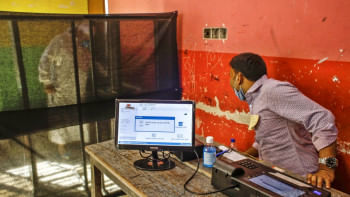What’s the point of polls sans voters?

What is an election for? Over the last decade or so, every controversial election in the country was justified using terms like "constitutional obligation" and "democratic continuity," as if an election is something that has to happen because it has to happen. There is an air of ritualism to how it has been approached or conducted. But election, in the end, is for voters. It is their willing and satisfactory participation that gives contesting parties the democratic mandate and legitimacy sought through this exercise.
And this is what has been missing in the ongoing upazila polls, like the other local and national elections held in recent years.
The second phase of the upazila election—perhaps to no one's surprise—has played out exactly like its predecessor: without voters. Held in 156 upazilas, it was able to draw only 37.57 percent of eligible voters. This is the second-lowest turnout in the history of upazila elections. The lowest ever? Well, that "honour" went to the first phase of the election held on May 8, in which only 36 percent of voters participated. The decreasing trend has been consistent throughout the upazila elections conducted under the Awami League government.
For example, voter turnout in the 2009 polls was 70.57 percent. It was 61.23 percent in 2014, and 40 percent in 2019. After May 8, both the Election Commission and Awami League had blamed rain and paddy harvesting for the ultra-low turnout. What will they blame now? Post-harvest fatigue?
It is pointless to talk about the winners in the second phase. Like in the first, most chairman and vice-chairman seats have been won by contestants affiliated with the Awami League. To be clear, the ruling party did not field candidates this year, so its grassroots leaders contested as independents. BNP's boycott of the polls can be a key factor behind the lack of enthusiasm from voters, but Tuesday's dismal showing has again underscored how scant public support is for the kind of elections being held under the current regime.
So, the questions we cannot tire of asking are: how does an election rejected by most voters qualify as a democratic exercise? Is the relative absence of violence enough to justify it? Will those elected through this process feel beholden to ordinary people?
Barring exceptions, they most likely will not. What is the point of an election, then? As things stand, the authorities have two choices: they can either ignore the abstentions writ large and carry on regardless, or they can finally listen to the voters and do something meaningful about it. For the sake of democracy, we hope they choose the latter.


 For all latest news, follow The Daily Star's Google News channel.
For all latest news, follow The Daily Star's Google News channel. 






Comments